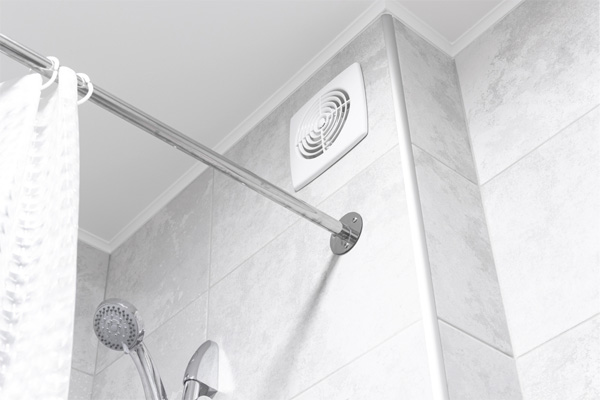Contents
- 10 Strategies to Cut Down on Heating Oil Costs
- 1. Implementing a Smart Oil Gauge
- 2. Opt for a Programmable Thermostat
- 3. Change Air Filters
- 4. Schedule Annual Professional HVAC Maintenance
- 5. Seal Openings
- 6. Improve Your Home’s Insulation
- 7. Exclude Unoccupied Rooms
- 8. Order Heating Oil in the Summer
- 9. Prevent Emergency Deliveries
- 10. Moderate the Use of Bathroom Fans
- Conclusion
- Contact Taylor Energy for All Your HVAC Needs
Living in Northern Connecticut presents a couple of undeniable realities: the chill of low temperatures and the burden of soaring heating expenses. In the heart of winter, locals rely heavily on their furnaces and boilers to find solace from the biting cold. While completely shutting off your heating system to cut costs isn’t a viable option, there are alternative strategies to lessen the financial impact of heating oil. In this piece, we’ll explore several ways to lower your oil heating costs without compromising your home’s warmth, comfort, and safety.
10 Strategies to Cut Down on Heating Oil Costs
Continue reading to uncover ten practical and impactful tips to help you decrease heating oil expenses and overall energy bills.
1. Implementing a Smart Oil Gauge

Informed decisions stem from accurate data, which applies equally to business and home heating management. A smart oil gauge is essential as it tracks your heating system’s oil consumption by the hour, day, week, month, and year. This automatic monitoring eases the task of managing your oil tank, giving you precise updates on whether it’s nearing empty or is adequately filled. With this data, you can employ effective fuel-saving strategies and immediately observe the outcomes.
2. Opt for a Programmable Thermostat

Every home operates on a unique schedule. Some homes buzz with activity in the early mornings as families prepare for work and school, while others become lively around mealtimes. These varying routines mean that heating requirements differ throughout the day. Homeowners can control their heating system by installing a programmable thermostat to align with their daily patterns. This device allows for the customization of temperature adjustments, enhancing the heating system’s efficiency and lowering your oil heating costs.
3. Change Air Filters
Consistent maintenance is key to the smooth operation of your heating system. Regular upkeep helps avert many potential issues by keeping your equipment in optimal condition. Make it a routine to clean around the furnace and oil tank, using these moments to inspect for leaks, rust, or any other irregularities. Replace the air filters every one to a few months, as the manufacturer recommends. If you see a thick layer of dirt accumulating on the filters, consider replacing them more frequently to ensure efficient system performance.
4. Schedule Annual Professional HVAC Maintenance

With their intricate network of components, heating systems require expert attention to maintain optimal performance. Professional HVAC technicians are adept at swiftly identifying and addressing potential issues before they compromise your heating efficiency. Their routine checks include examining electrical connections, cleaning internal components, and replacing worn parts. It’s advisable to schedule these comprehensive tune-ups annually, preferably in the fall when temperatures are moderate, allowing you to comfortably switch off your furnace for the duration of the service.
5. Seal Openings
Your home’s doors and windows are more than entry points; they can also be avenues for cold air to seep in through small gaps, even when shut. A simple way to detect these drafts is by feeling along the edges of doors and windows with your hand. These drafts can lower the indoor temperature, causing your heating system to exert more effort to maintain the desired warmth. Sealing these openings with caulking and weatherstripping can greatly diminish cold air infiltration and reduce oil heating costs.
6. Improve Your Home’s Insulation
Assess the effectiveness of your current insulation. Is it effectively retaining warmth in your home? If it seems lacking, consider augmenting your home’s defense against the cold with additional insulation. Check for damage caused by moisture or pests, as compromised insulation may need replacement. Proper insulation helps retain heat inside your home for extended periods, reducing the workload on your furnace. This, in turn, should lead to a noticeable reduction in heating oil usage and oil heating costs. Over time, the energy savings accrued can offset the cost of the insulation upgrade.
7. Exclude Unoccupied Rooms
In larger homes, certain areas like guest rooms, storage spaces, or other seldom-used rooms often remain vacant for extended periods. You can reduce your heating system’s workload by closing the vents in these unoccupied spaces. This prevents hot air from being unnecessarily directed to these areas. By doing so, your furnace will require less oil to maintain the desired temperature in the frequently used parts of your home. However, be cautious not to restrict airflow excessively.
8. Order Heating Oil in the Summer
Market prices for commodities like heating oil often vary according to supply and demand dynamics. Typically, prices are lower when there is abundant supply and minimal demand. The demand for heating oil spikes during winter, but it significantly drops in the summer as warmer temperatures reduce the need for heating. This decrease in demand often prompts oil suppliers to lower their prices to attract customers. Capitalize on this seasonal pricing by ordering your heating oil in the summer. Filling your tank during this period allows you to benefit from the reduced prices and, consequently, lowering oil heating costs.
9. Prevent Emergency Deliveries
It’s not uncommon for a heating oil tank to deplete before winter ends, necessitating a mid-season refill. To avoid additional costs, schedule these refills during regular business hours. Suppliers often charge premium rates for deliveries made during off-hours, such as nights, weekends, or holidays, due to the higher wages paid for these special circumstances. To circumvent such scenarios, monitoring your oil tank levels and arranging a refill when it reaches about 30% capacity is best. This is a great way to reduce your oil heating costs.
10. Moderate the Use of Bathroom Fans

Bathroom fans are essential for enhancing air circulation, managing moisture levels, and eliminating odors. However, they can contribute to heat loss in your home by expelling warm air at a significant rate. Use these fans judiciously and avoid leaving them on for extended periods. If your fan includes a built-in timer, experiment with shorter durations to see if they still effectively manage humidity and odors. By fine-tuning the usage of your bathroom fans, you can achieve a balance between maintaining a comfortable environment and reducing oil and electricity consumption.
Conclusion
Lowering your oil heating costs can be achieved through straightforward adjustments within your home. Small habit changes, home enhancements, and integrating efficient devices into your heating system can significantly reduce oil consumption. These measures don’t demand excessive time, money, or effort but can have a considerable impact. Remember, you’re not alone in this endeavor. For comprehensive support, including affordable annual tune-ups, resolving ongoing issues, and gaining expert heating advice, don’t hesitate to contact professional HVAC services.
Contact Taylor Energy for All Your HVAC Needs
Taylor Energy delivers top-notch heating and cooling services across Northern Connecticut. Our team consists of professionally certified technicians, each skilled in providing exceptional HVAC tune-ups, repairs, installations, and replacements. They possess the expertise and experience necessary to service your HVAC system efficiently and effectively.
We pride ourselves on offering the most competitive rates for heating and cooling services in the region. Our maintenance solutions are designed to enhance your comfort, boost energy efficiency, and help reduce your home’s heating and cooling costs.
Should you require HVAC repair or a system replacement, we’re here to recommend the most suitable options for your home, ensuring they align with your budget. We stand behind our work with a guarantee for your complete satisfaction. To arrange a service appointment and take advantage of our free, in-home estimates, please contact Taylor Energy today.
You can click here to contact us now or call us at (860) 623-3308 to find out more! Click the link to view our service area.

Related Articles:
